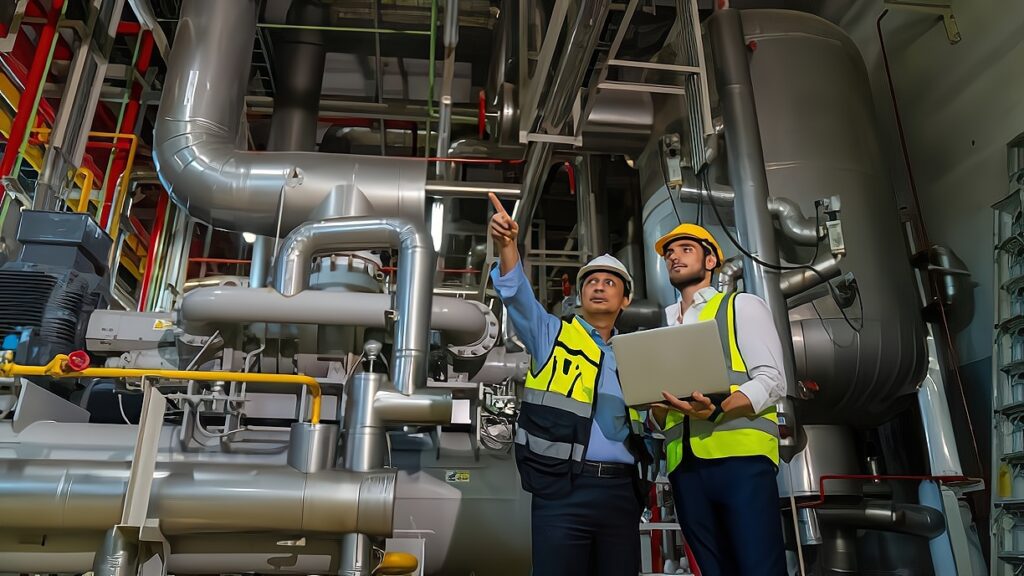In any manufacturing plant, cleanliness isn’t just about appearances—it’s a critical component of operational efficiency, safety, and product quality. Whether it’s food, pharmaceuticals, electronics, or automotive, every sector requires a clean environment to ensure that production runs smoothly and in compliance with industry standards. Cleanliness in a manufacturing plant can often mean the difference between a thriving operation and one that faces costly downtime, safety violations, or even legal repercussions.
This blog explores why cleanliness is so important in manufacturing plants, the risks of poor hygiene, and best practices to maintain a clean and efficient workspace. Read on to understand why investing in cleanliness can yield significant returns for your manufacturing business.
The Importance of Cleanliness in Manufacturing Plants
1. Ensuring Product Quality
One of the primary reasons cleanliness matters in a manufacturing plant is its direct impact on product quality. Contaminants such as dust, dirt, or residues from previous production cycles can lead to defects or contamination in finished products. In sectors like food processing or pharmaceuticals, such contamination can pose serious health risks and lead to costly recalls. In industries like electronics or automotive, even minor contamination can damage sensitive equipment or result in substandard products.
Maintaining a clean environment helps prevent these issues, ensuring that products meet the necessary quality standards. A well-maintained plant reflects a commitment to quality, which enhances customer trust and satisfaction.
2. Compliance with Health and Safety Regulations
Every manufacturing plant must comply with industry-specific regulations regarding cleanliness and hygiene. For example, food manufacturing plants must adhere to guidelines set by regulatory bodies like the FDA (Food and Drug Administration) or local health authorities. Failure to meet these standards can result in hefty fines, legal consequences, and even shutdowns.
Keeping the plant clean not only ensures compliance with these regulations but also reduces the risk of workplace accidents. For instance, slippery floors or cluttered walkways increase the likelihood of slips, trips, and falls, which are common causes of injury in industrial settings.
3. Preventing Cross-Contamination
Cross-contamination is a significant concern in manufacturing, particularly in sectors dealing with chemicals, food, or pharmaceuticals. In a manufacturing plant, improper cleaning practices can lead to one batch of materials being contaminated by residues from another, causing a product to become unusable or unsafe.
By maintaining strict cleanliness protocols, plants can minimize the risk of cross-contamination and ensure that production lines are running efficiently. This reduces the likelihood of costly waste or product recalls, ultimately protecting the company’s bottom line.
4. Enhancing Operational Efficiency
A clean manufacturing plant is often a more efficient one. Clutter and dirt can hinder the movement of workers and machinery, slowing down production processes. Dust buildup in machinery can lead to breakdowns, requiring expensive repairs or causing unplanned downtime.
By regularly cleaning and maintaining both the workspace and equipment, plants can avoid these inefficiencies. Equipment will run more smoothly, and workers will have an organized environment to perform their tasks quickly and safely, boosting overall productivity.
5. Boosting Employee Morale and Well-Being
Employees are more likely to take pride in their work when they operate in a clean and organized environment. A clean manufacturing plant demonstrates that the company values their health and well-being, which can boost morale and increase job satisfaction.
Moreover, clean environments reduce the risk of respiratory issues, skin problems, or other health concerns that can arise from prolonged exposure to dirt, dust, or chemical residues. By ensuring cleanliness, companies can reduce absenteeism and increase employee retention, saving on recruitment and training costs.
Best Practices for Maintaining Cleanliness in a Manufacturing Plant
1. Implement Regular Cleaning Schedules
To maintain high standards of cleanliness, it’s crucial to have a well-structured cleaning schedule that includes daily, weekly, and monthly tasks. Break down the cleaning tasks by areas, such as production floors, equipment, storage areas, and office spaces. Make sure to assign these tasks to responsible personnel and track their completion.
2. Train Employees on Proper Cleaning Procedures
Training employees is key to ensuring that cleanliness protocols are followed correctly. Make sure every worker understands the importance of maintaining a clean environment and knows how to clean their specific workstation or equipment. Consider hosting regular training sessions to reinforce these procedures.
3. Use the Right Cleaning Equipment and Materials
Using appropriate cleaning tools and chemicals for different areas of the manufacturing plant is critical. For example, industrial-grade vacuum cleaners can effectively remove dust from sensitive equipment, while specific disinfectants might be necessary for food processing areas. The wrong cleaning agents or methods could damage equipment or fail to eliminate contaminants effectively.
4. Adopt Lean Manufacturing Principles
Lean manufacturing emphasizes reducing waste in all its forms, including wasted time due to unclean or disorganized workspaces. A clean environment aligns with lean principles, as it helps streamline operations and eliminate inefficiencies. Regular cleaning and organization are integral parts of the “5S” methodology in lean manufacturing—Sort, Set in Order, Shine, Standardize, and Sustain.
5. Encourage Employee Involvement
Make cleanliness everyone’s responsibility, not just the cleaning crew’s. Encourage employees to clean as they go and maintain their workspaces. When cleanliness is embedded into the company’s culture, it becomes second nature for employees, contributing to a more efficient and safe work environment.
FAQs About Cleanliness in Manufacturing Plants
1. Why is cleanliness important in a manufacturing plant?
Cleanliness in a manufacturing plant is crucial for ensuring product quality, compliance with safety regulations, and preventing workplace accidents. A clean environment also boosts operational efficiency and enhances employee morale.
2. What are the risks of not maintaining a clean manufacturing plant?
Neglecting cleanliness can lead to contamination of products, regulatory violations, machine breakdowns, workplace accidents, and a drop in employee morale. These risks can result in costly recalls, legal penalties, and lost productivity.
3. How often should a manufacturing plant be cleaned?
A manufacturing plant should be cleaned regularly, with daily, weekly, and monthly cleaning schedules in place. The frequency of cleaning depends on the type of products being manufactured and the specific regulations that apply to the industry.
4. What cleaning methods are best for a manufacturing plant?
The best cleaning methods depend on the industry, but they typically include dusting, vacuuming, disinfecting surfaces, and using specialized cleaning agents for sensitive equipment. In some cases, steam cleaning or industrial vacuums may be necessary to maintain cleanliness standards.
5. How can cleanliness improve operational efficiency in manufacturing plants?
A clean manufacturing plant reduces the risk of equipment malfunctions, speeds up production processes by reducing clutter, and creates a safer work environment. This boosts overall efficiency and helps the plant meet production targets without interruptions.
Conclusion
Cleanliness in a manufacturing plant is more than just a matter of hygiene; it’s a fundamental part of ensuring safety, efficiency, and product quality. By prioritizing cleanliness, companies can reduce the risks of contamination, improve operational efficiency, comply with regulations, and foster a positive workplace environment. Adopting proper cleaning protocols and making cleanliness part of the company culture can lead to significant benefits for both the business and its employees.



